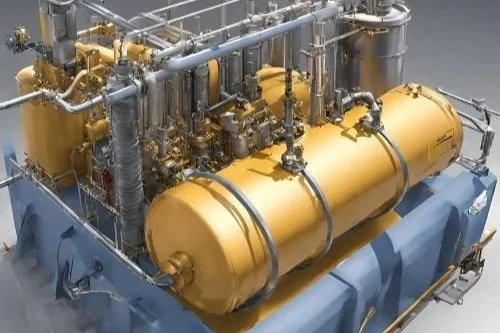Salt Cavern Resources
Salt caverns are fascinating geological formations that are created through a natural process known as "solution mining." The formation of salt caverns began millions of years ago, with the deposition of ancient oceans and seas.
A salt cavern can be a natural formation with historical value or a man-made structure constructed for specialized functions and is essentially a subterranean void cut out within a salt rock formation.
Created by natural dissolution, salt caverns provide valuable storage facilities for a variety of reasons. These deep caverns provide safe and stable storage for a wide range of goods, including natural gas, petroleum products, and even strategic reserves.
The advantageous geological characteristics of salt caverns make them a special and adaptable storage option for a wide range of materials.
The technique of solution mining produces artificial salt caverns, which have several uses including compressed air, natural gas, and hydrocarbon storage.
Hydrogen, as a clean and versatile energy carrier, has gained significant attention in recent years. However, effective storage of hydrogen is a critical challenge that needs to be addressed for its widespread adoption in various applications.
While Salt Domes are natural geological structures formed over millions of years, Salt Caverns are man-made void spaces within salt deposits.
The United States' salt caverns have enormous technical potential offering a dependable and safe environment for a wide range of energy and industrial uses.
Due to their low permeability and high porosity, salt formations are able to contain large volumes of hydrogen gas without running the risk of leaking. This long-term preservation of the hydrogen storage's integrity is made possible by the physical characteristics of salt deposits.
Compressed Air Energy Storage
Because of their great strength and impermeable nature, salt caverns are especially well-suited for compressed air energy storage (CAES).
Nevertheless, because of its low density and the requirement for large-scale storage systems, the storage of hydrogen presents considerable technical problems. Because of its special physical and geological characteristics, salt caverns have attracted the most attention among the different storage solutions.
Because of their stability and security, salt caverns are used to store natural gas, oil, hydrogen, and even dangerous chemicals. Finding a dependable, experienced salt cavern engineering team in Texas, where the energy industry is a major player, can mean the difference between project success and failure.
At this writing, within the United States, there are approximately 36 total underground natural-gas salt cavern facilities. The majority of these facilities are on the Gulf Coast (U.S. Department of Transportation, Pipeline and Hazardous Materials Safety Administration)
Salt caverns store hydrogen gas because they have several important advantages. Since salt caverns have a special mix of impermeability, safety features, and geology that makes them perfect for this use, they offer an affordable way to store large amounts of hydrogen.














